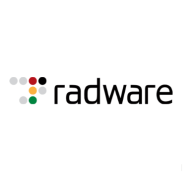

Radware Alteon and Amazon Elastic Load Balancing compete in the application delivery and load balancing category. Radware Alteon holds an edge due to its advanced security features and dedicated hardware reliability.
Features: Radware Alteon is known for its robust security, including integrated application protection and SSL offload, as well as its advanced load balancing with error detection. On the other hand, Amazon Elastic Load Balancing offers seamless cloud integration and automatic traffic distribution, excelling in scalability and ease of use.
Room for Improvement: Radware Alteon users suggest improvements in automation, live traffic monitoring, and the need for a better graphical user interface. Amazon Elastic Load Balancing users desire enhanced security features, stability assurance, and simpler routing policies, pointing out the complexity of reporting setup and integration with existing infrastructure.
Ease of Deployment and Customer Service: Radware Alteon offers deployment flexibility primarily in on-premises environments, whereas Amazon Elastic Load Balancing is preferred for cloud or hybrid setups. Radware's deployment process is satisfactory, yet migrating from other solutions can be complex, and customer service response times could improve. Amazon's cloud-native ease of setup is valued, though support speed and issue detection are areas needing enhancement.
Pricing and ROI: Radware Alteon is considered cost-effective, bundled with hardware and support, providing excellent ROI through its Global Elastic License savings. Amazon Elastic Load Balancing's pay-as-you-go pricing model is competitive and reasonably priced compared to other cloud providers, though traffic-based costs can add up, affecting the balanced view on ROI.
Elastic Load Balancing is a part of a total solution package.
Amazon Elastic Load Balancing requires minimal personnel for handling, which contributes to organizational value either in terms of cost savings or efficiency.
The support team has architects available.
I would rate Amazon's technical support a nine out of ten.
The technical support is very responsive due to the prime-level support package.
We never face support issues, and their team resolves any critical issues quickly once they are involved.
There is a dedicated expert answering even the toughest questions.
The customer service and support are excellent.
It automatically scales up or down based on the quantity of requests, optimizing cost while efficiently managing varying workloads.
Managing traffic load is efficient as Auto Scaling Group can easily be connected with ALB based on the number of requests.
It handles peak loads and thousands of concurrent connections without exceeding 10% utilization.
We have it deployed across multiple geographic locations, benefiting from load balancing resiliency.
I would rate it a nine out of ten for scalability.
It is a stable and reliable service of AWS.
We've never faced downtime, even during peak transaction hours.
There is minimal downtime, and the solution is quite stable.
Improvements could involve making Amazon Elastic Load Balancing a global service, as currently, it is region-specific.
For example, in India, we have just two regions at the moment, which impacts latency.
The ability to directly block specific IP addresses without additional service integration would be beneficial.
They keep integrating new features that sometimes break our production, but we use clustered systems, so we can test those software releases.
Other OEMs offer free courses and hands-on labs on new technologies and features, which we find useful.
Integration with cloud services could be improved.
Using ALB incurs a cost as opposed to the free open-source solutions like NGINX or HAProxy.
Pricing is okay, and Amazon has plans to reduce prices further.
For our solution, it was right in the middle of price performance.
The cost of the Radware solution is reasonable and stable.
The implementation and running costs are quite high.
The Application Load Balancer is noteworthy due to session persistence, traffic distribution, and integration with auto-scaling, which helps manage server scaling automatically based on demand.
It is the de facto standard for AWS workloads and supports the AWS ecosystem seamlessly.
Deploy our solution in multiple availability zones, it ensures that the system is always available and does not go down.
The product allows us to manage multiple networks and VLANs into a single box and add numerous web services and farms efficiently.
The most valuable features include the availability with an optional high-availability mode ensuring service continuity because of the resiliency.
I find the best features to be the flexibility and ease of use.
| Product | Market Share (%) |
|---|---|
| Radware Alteon | 4.5% |
| Amazon Elastic Load Balancing | 1.7% |
| Other | 93.8% |


| Company Size | Count |
|---|---|
| Small Business | 14 |
| Midsize Enterprise | 5 |
| Large Enterprise | 5 |
| Company Size | Count |
|---|---|
| Small Business | 17 |
| Midsize Enterprise | 17 |
| Large Enterprise | 21 |
Elastic Load Balancing automatically distributes incoming application traffic across multiple targets, such as Amazon EC2 instances, containers, IP addresses, and Lambda functions. It can handle the varying load of your application traffic in a single Availability Zone or across multiple Availability Zones. Elastic Load Balancing offers three types of load balancers that all feature the high availability, automatic scaling, and robust security necessary to make your applications fault tolerant.
Radware Alteon is an application delivery controller (ADC) solution that provides global load balancing for all web, cloud and mobile-based applications. The solution is designed to help your organization simplify operations while ensuring resilience and SLA. It manages application traffic across both data and cloud center locations, optimizing availability and performance. In addition, Radware Alteon integrates multiple application protection services to provide protection against an array of cyberthreats.
Radware Alteon Features
Radware Alteon has many valuable key features. Some of the most useful ones include:
Radware Alteon Benefits
There are many benefits to implementing Radware Alteon. Some of the biggest advantages the solution offers include:
Reviews from Real Users
Below are some reviews and helpful feedback written by PeerSpot users currently using the solution.
PeerSpot reviewer Jefe de implementaciones de Datos at RETO Industrial S.A. de. C.V., mentions, “The simple and well-documented configuration allows us to be able to implement new balancing services at the request of the user with the same conditions and good service that they expect. We can also make changes to services that are already running, as I mentioned before, the graphical interface is very intuitive and you can almost always make the most common changes quickly. Radware has been characterized by being extremely robust. This gives us the confidence to offer our users a continuous service.”
A director of consulting says, “The most valuable features are the load-balancing and reverse proxy. Global-load balancing as well is valuable. I also find it to be stable. To date, we have not had any issues with it.”
An SOC Specialist at a tech services company explains, “The interface is easy, it's friendly, and has good alerting. When you have a problem with a server, it will alert you. It is useful in many areas, especially for web applications and load balancing. It's something that the customer can see on the internet.”
We monitor all Application Delivery Controllers (ADC) reviews to prevent fraudulent reviews and keep review quality high. We do not post reviews by company employees or direct competitors. We validate each review for authenticity via cross-reference with LinkedIn, and personal follow-up with the reviewer when necessary.